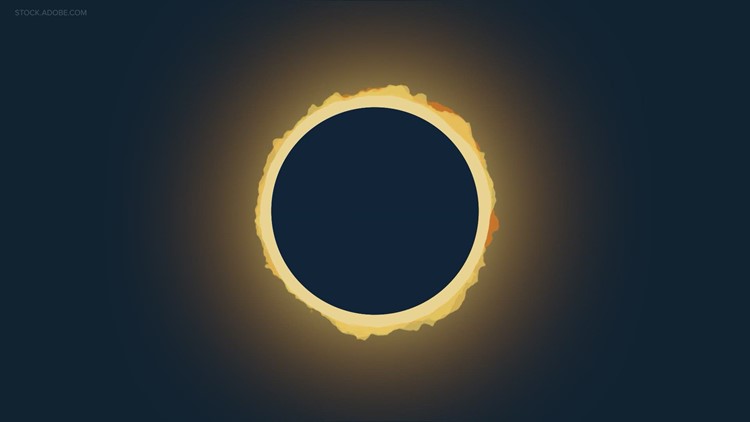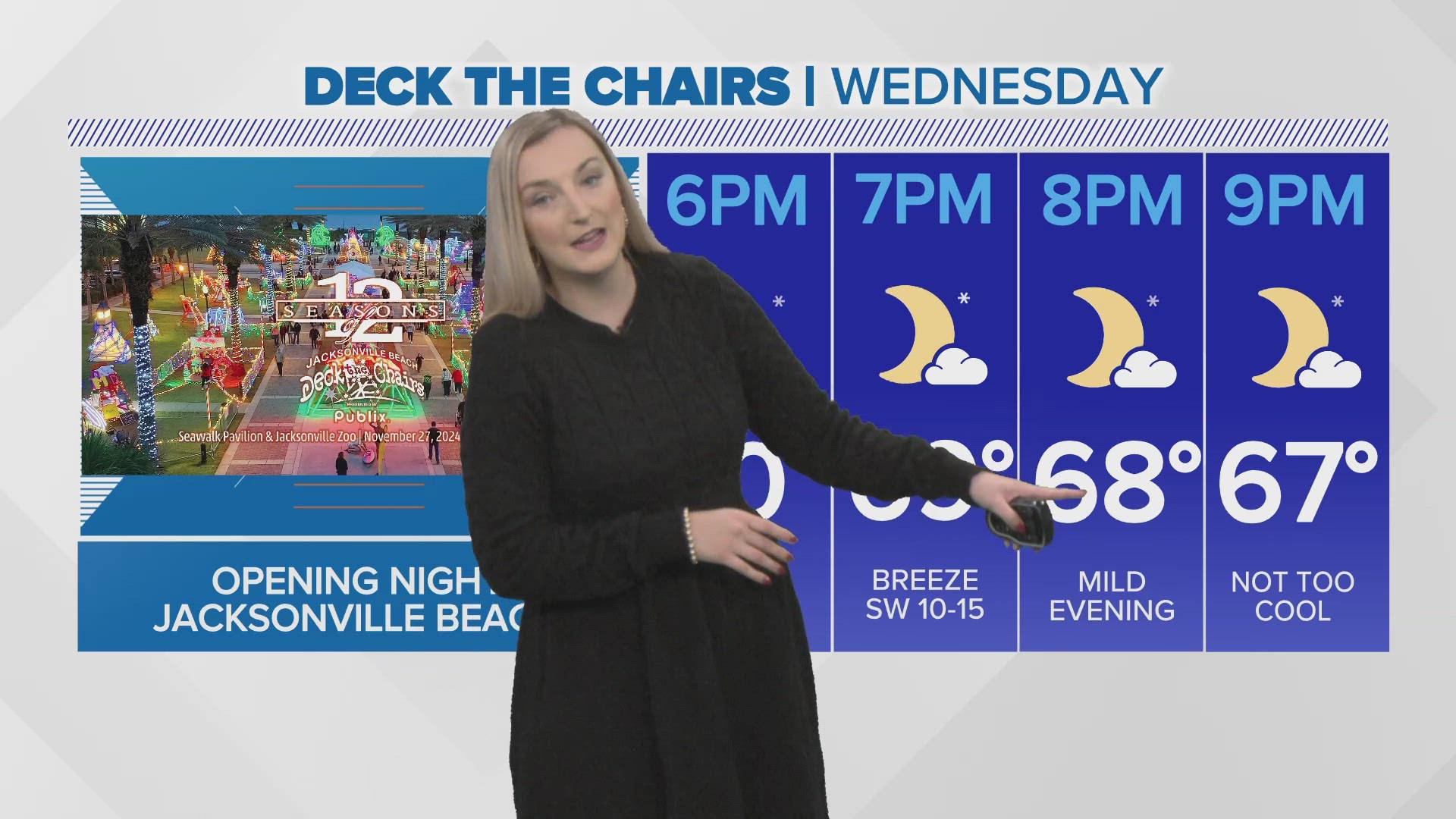Saturday's eclipse will be a sight to see -- safely!
To view the eclipse, you'll need eye protection. Remember, you're still looking at the sun, even if part of it is blocked! Not only will looking at the sun potentially cause irreversible damage to your eyes, but you likely won't be able to notice any difference in the sun without specialized glasses.
Regular sunglasses will not suffice - you will need special solar viewers that comply with ISO 12312-2 standards. These are thousands of times darker than sunglasses. If you look at the eclipse with only a pair of sunglasses, permanent eye damage is possible, such as the sun's image being burned into your retina.
Be careful when choosing your solar viewer - counterfeit ones have been found on sights like Amazon and eBay. You must make sure they are ISO approved or else viewing the eclipse could cause permanent damage to your eyes.
Have you run out of time to order solar viewers? You can also view the eclipse indirectly through pinhole or optical projection. Pinhole projection is a way to view the eclipse through shadows and small holes. You can use hole punches, your finger, a pasta strainer, and even the trees! For example, if you look down at the shadows of leaves on the ground during an eclipse, the spaces between the leaves will act as pinhole projectors and show images of the crescent sun. Optical projection uses a telescope or binoculars to project images of the crescent sun onto a surface. Instructions on how to create pinhole projections or optical projections can be found here.

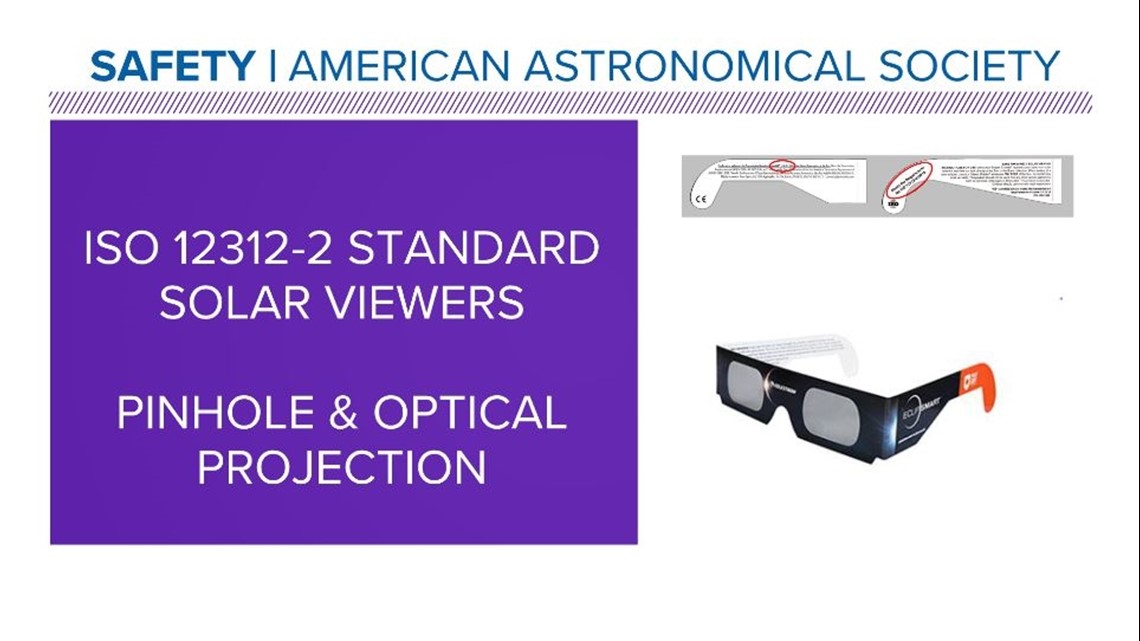
You cannot view an eclipse through a camera. The sun can damage the camera's sensor. If the camera has a viewfinder, then looking at the sun through the viewfinder can damage the eye. There are specific solar filters that can be used to capture the eclipse through a camera.
If you'd like to see the eclipse safely through a telescope, you can attend viewing parties in Jacksonville.
So, what can we see once we're equipped with proper viewing equipment? The First Coast won't have an annular eclipse, meaning 100% of the moon covers the sun. However, we will have a partial eclipse. At the maximum coverage point, 52.51% of the sun will be blocked by the moon along the First Coast.
At 11:50 a.m., the eclipse will begin in Jacksonville.

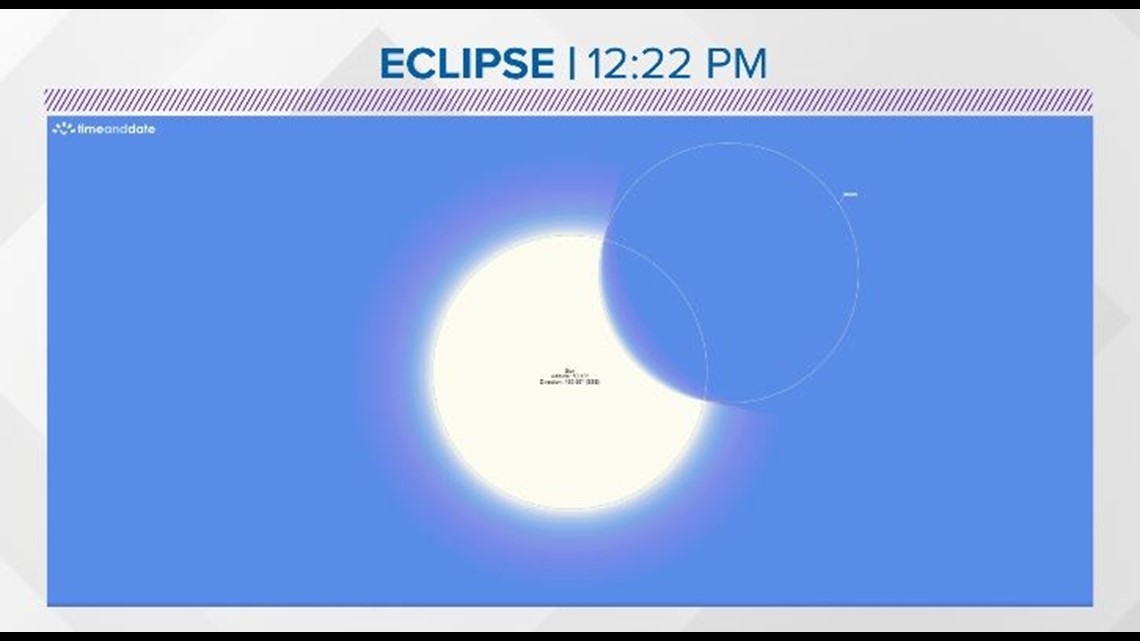
The maximum eclipse will occur at 1:22 p.m.



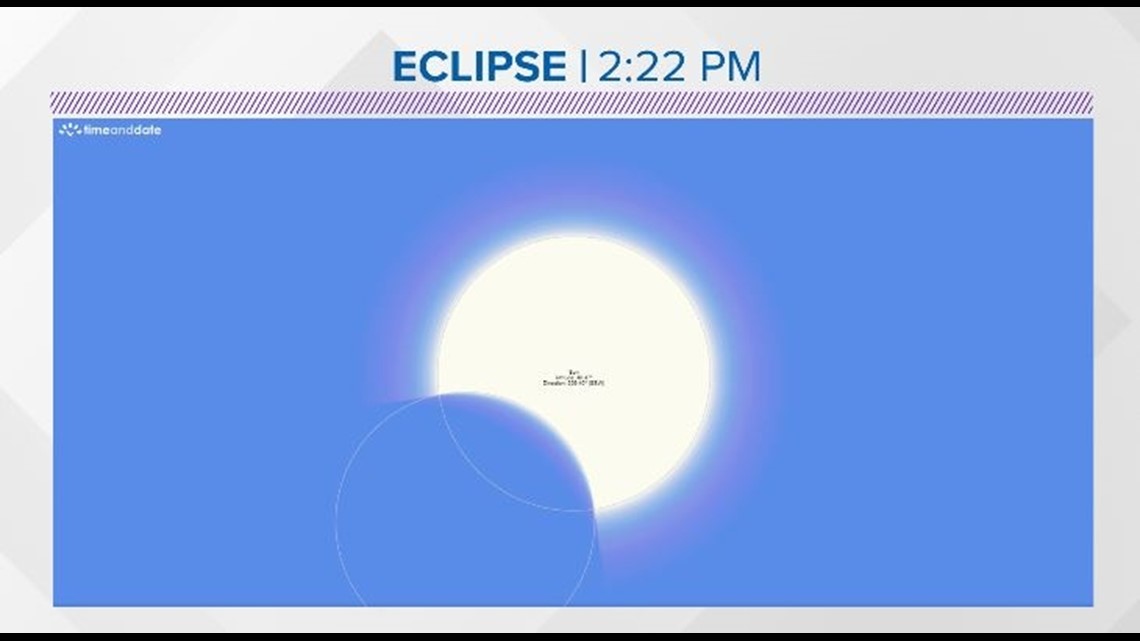
The eclipse will come to an end at 2:57 p.m.
Your Most Accurate Forecast calls for partly sunny skies with some rain. The First Coast should have breaks in the clouds during the 11:50 a.m. - 2:57 p.m. window to see the eclipse.

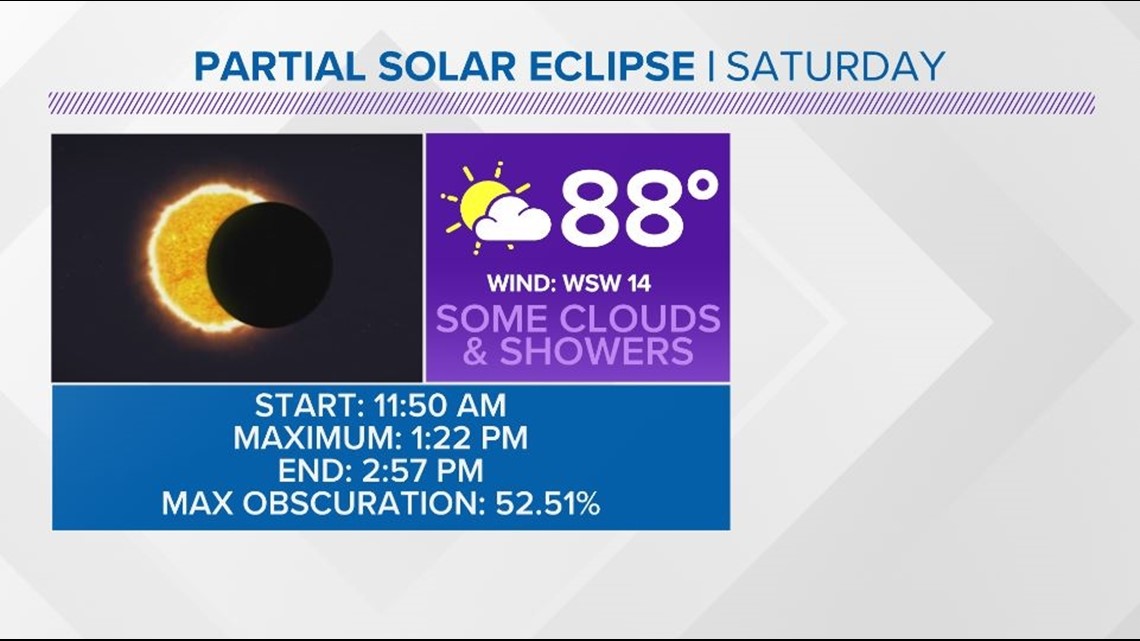


The October eclipse is an annular eclipse and not a total solar eclipse. What's the difference? An annular eclipse occurs when the moon is at its farthest point in its orbit from Earth (called perigee), meaning it's size in the sky isn't large enough to completely block the sun. Instead, it looks like a ring of fire is visible around the moon during 100% coverage, as seen below in an image from NASA.

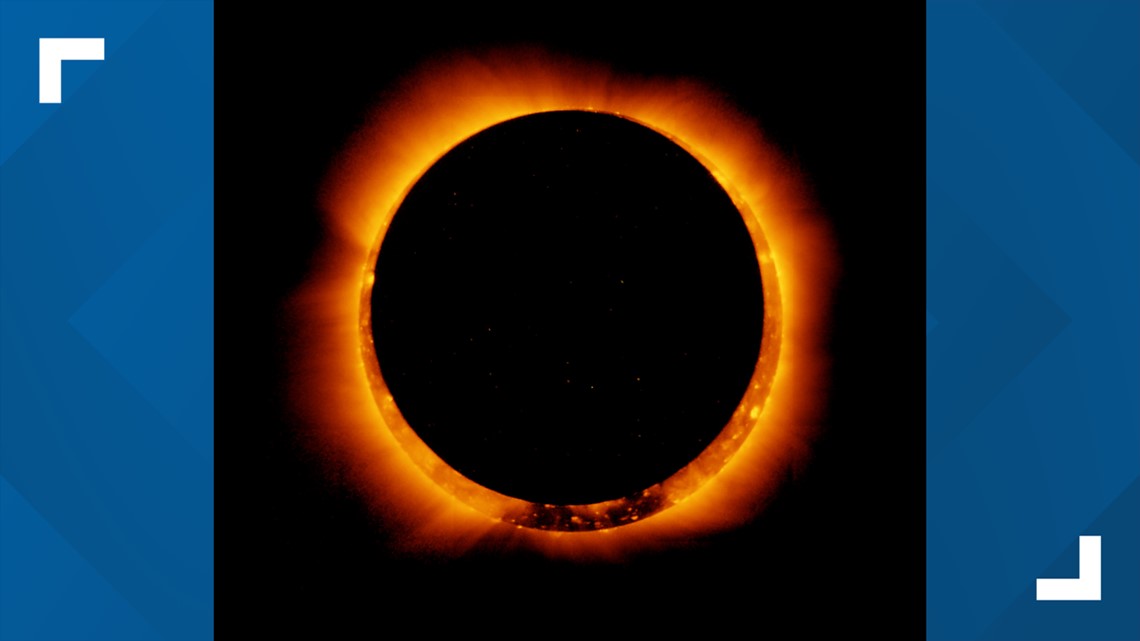
If you want to see the annular eclipse and not just a partial eclipse, you'll need to travel west. It will be visible in Oregon starting at 9:13 a.m. PDT, then cross parts of northeast California, a sliver of southwest Idaho, Nevada, Utah, northeast Arizona, southwest Colorado, New Mexico, and Texas. It will end around Corpus Christi, Texas, at 12:03 p.m. CDT.
We hope to see you outside for this Saturday spectacle!




